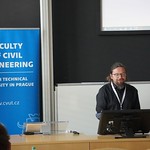Open Data – why is it important?

Open Data is NOT only data that you can access without paying a fee or similar.
Google Maps distributes, for example, proprietary data which neither has an open license, nor can be used without dealing with complex permissions and terms of use. OpenStreetMap, on the other hand, is a genuine Open Data project. Open data and content can be freely used, modified, and shared by anyone for any purpose. Not every data is “Open” even though the data producers can claim full openness. An open work must satisfy the following requirements in its distribution:
-
Open license (http://opendefinition.org/licenses/) i.e. must allow free use of the licensed work; it must allow redistribution of the licensed work, including sale, whether on its own or as part of a collection made from works from different sources etc.,
-
Open Access i.e. the work must be available as a whole and at no more than a reasonable one-time reproduction cost, preferably downloadable via the Internet without charge, and
-
Open Data Format (http://opendefinition.org/od/) i.e. the work must be provided in a convenient and modifiable form such that there are no unnecessary technological obstacles to the performance of the licensed rights.
Why is Open Data and Open Science important? Open Data is important not only at the level of organizations or countries, it can also be considered as a fundamental driver of global growth and democratization of society. European Commission indicates that EU could save €10.2 billion per year by using FAIR data.
The FAIR principles (https://www.nature.com/articles/sdata201618) imply that the produced data is Findable, Accessible, Interoperable and Reusable. The OpenLandMap.org application, for example, provides a state of the art platform where users can easily find geodata. There is an increasing need for tools that can be used to rapidly and intuitively discover, visualize, review and assess huge volumes of relevant geodata. Open data and content can be freely used, modified, and shared by anyone for any purpose.
To advance even further use of data, both data and code should be made Reusable and Reproducible (reproducibility of scientific research is considered to be one of the main problems of modern science). All input data used to create our outputs, as well as all computer code and models, are retained and provided so that anyone can reuse our data or models to reproduce results or produce new results of their own.
Read more:
- Hengl T, Wheeler I, MacMillan RA. 2018. A brief introduction to Open Data, Open Source Software and Collective Intelligence for environmental data creators and users. PeerJ Preprints 6:e27127v2 https://doi.org/10.7287/peerj.preprints.27127v2
![]()







